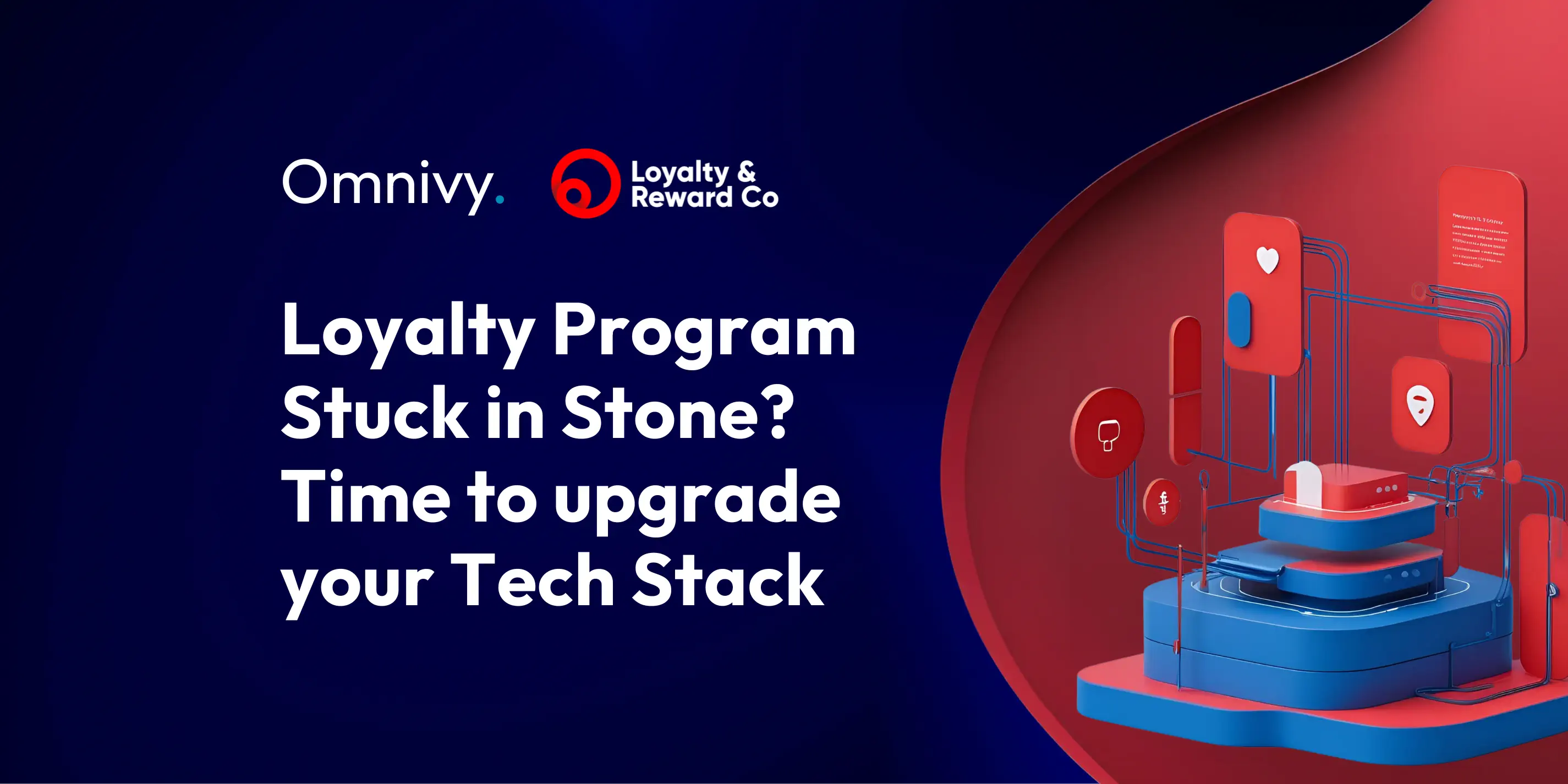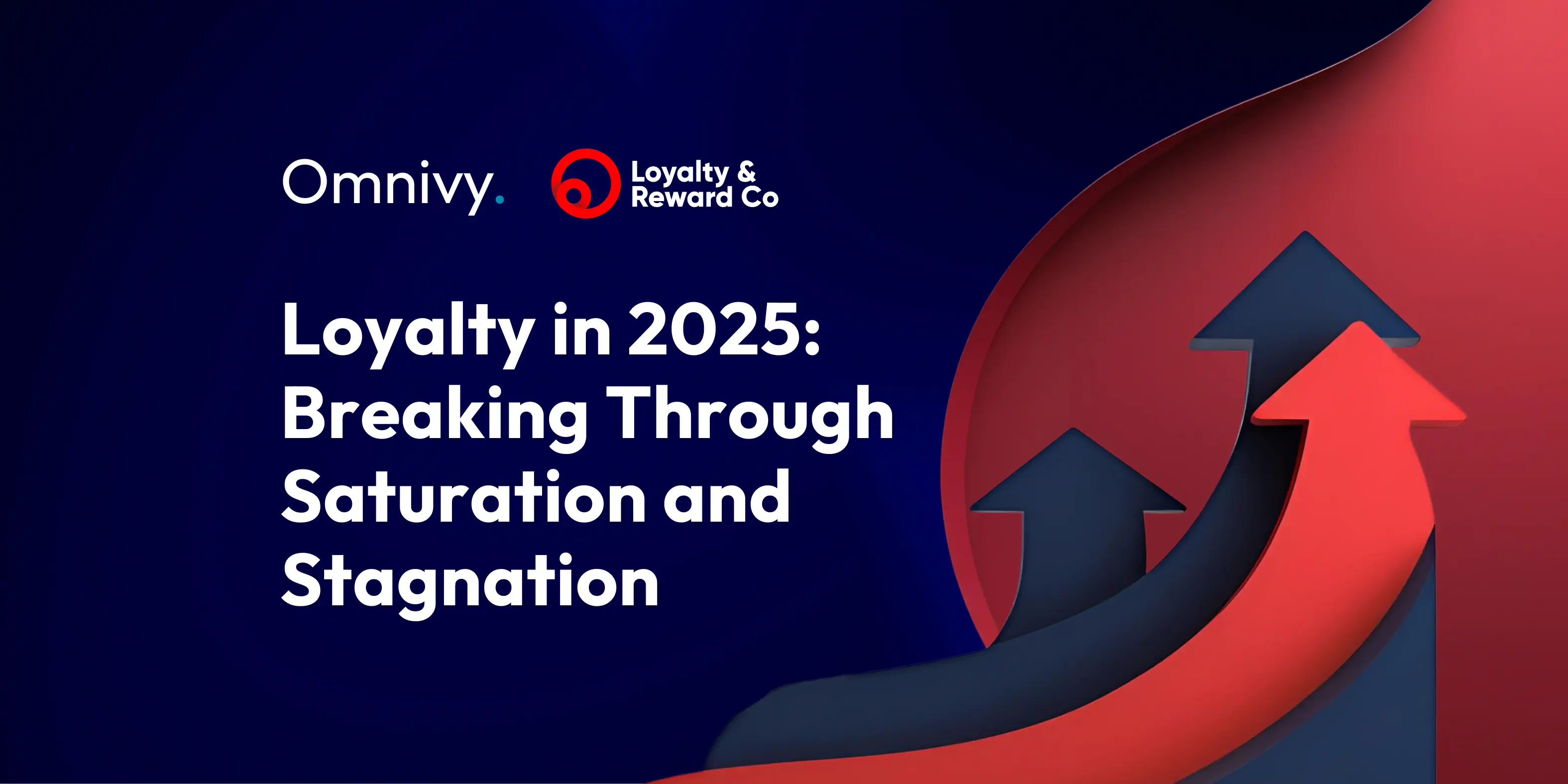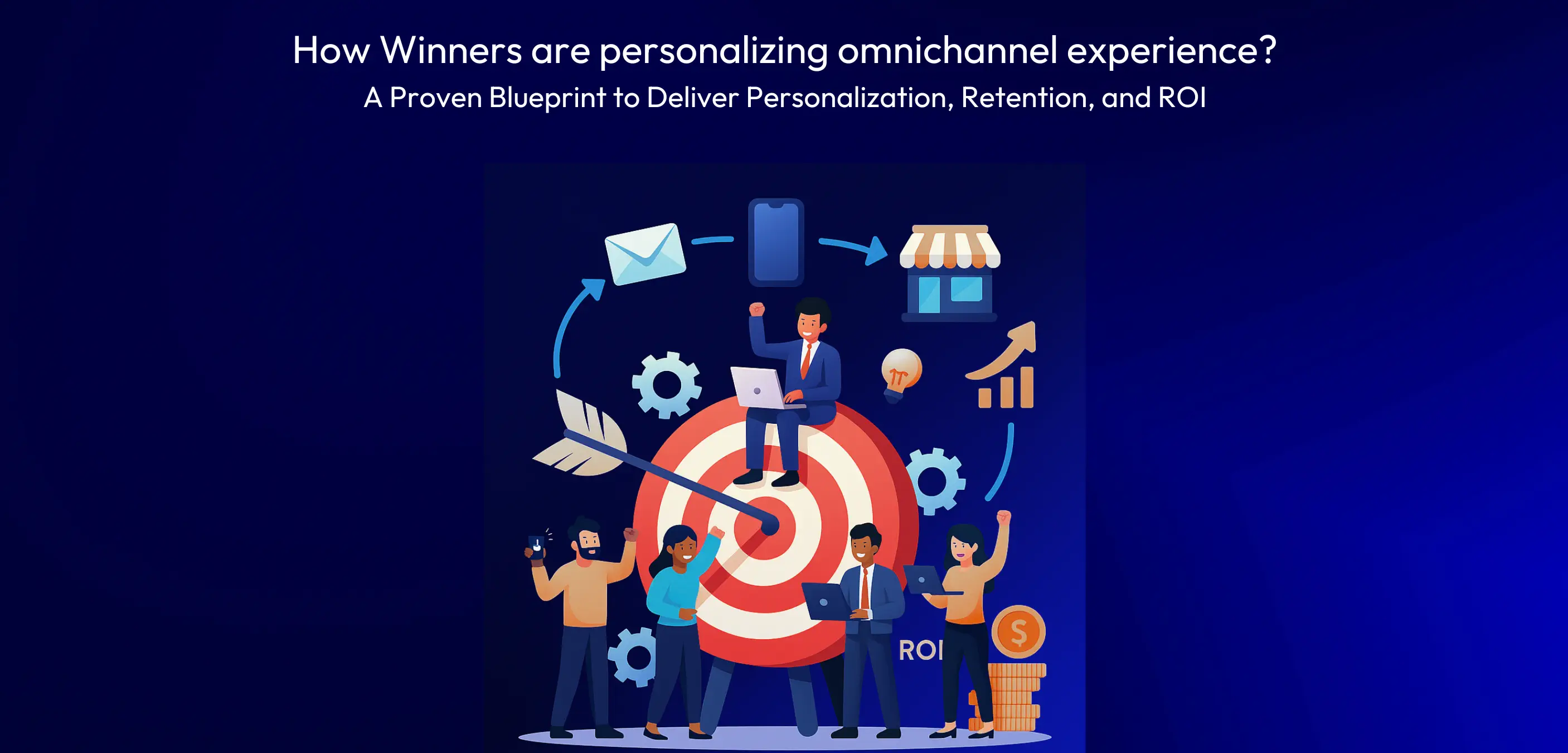Attention all Loyalty Managers
While your internal organizational structure may not necessarily reflect this, in 99% of cases, loyalty programs and the technology that powers them are, in fact, a small (yet important) piece in a bigger ecosystem of marketing technology that your organization relies on.
Consider CRMs, CMSs, CIAMs, Marketing Automation, E-commerce platforms, personalization engines, and all the other 2-3 lettered shiny toys that your loyalty tech is (or should be) integrated with.
If you were to read a single report on the state of Marketing Technology at the beginning of 2024, it should be the MarTech for 2024 by the amazing Scott Brinker and Frans Riemersma of Chief Martec & MarTechTribe
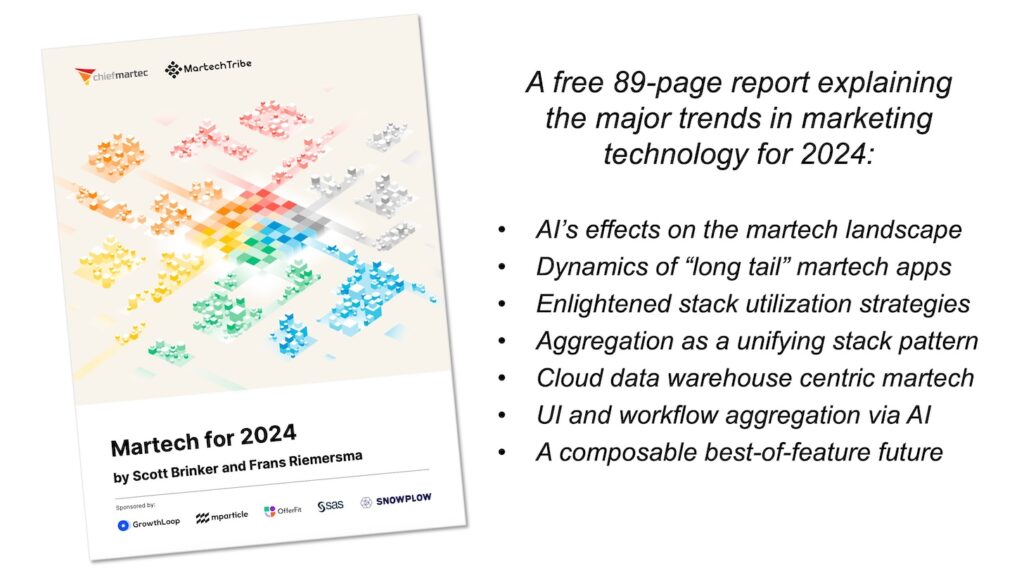
You can get it for free without any registration or other nonsense here - Martech for 2024 | Chief Martec
Here are some of the key highlights that I found particularly interesting.
MarTech utilization
Unlocking the full potential of technology isn't just a challenge in the realm of loyalty programs; it's an issue throughout the entire MarTech landscape. According to Gartner – most large marketing organizations claim to be utilizing only 33% of their martech capabilities.
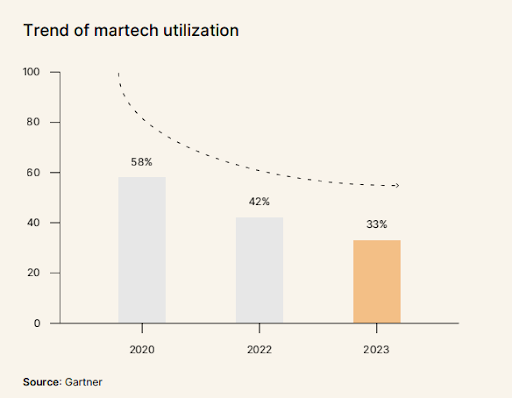
So, why the underutilization?
Gartner delved into the minds of marketing professionals, and the top four reasons they uncovered are nothing short of eye-opening.

But here's the intriguing twist: Dive deeper into the responses, and you'll find a common thread that resonates with the insights from the Global Customer Loyalty Report 2024 by Antavo. The report emphasizes the importance of ease of integration when selecting loyalty technology, subtly echoing the sentiments of Gartner's findings.
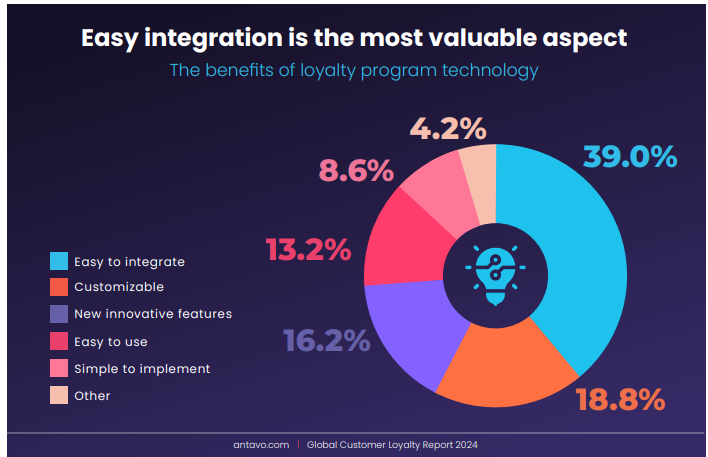
At the end of the day - integration is where most of the complexity of MarTech implementation projects come from.
Impact of Generative AI
An insightful examination of the martech technology landscape reveals a not surprising trend: generative AI use cases took the lead, constituting 73% of the new marketing technology introduced last year.
This has left a mark on various sectors, with standout usage categories showcasing its widespread impact:
- Content Marketing - 33.98%
- Sales Automation Enablement & Intelligence - 10.52%
- Business/Customer Intelligence & Data Science - 8.58%
- Live Chats & Chatbots - 4.53%
- Customer Experience Service & Success - 3.88%
- Collaboration tools - 3.72%
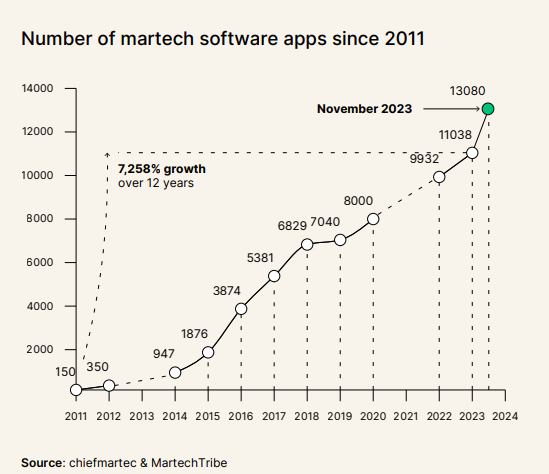
While it's true that the vast majority of these tools may never emerge from the long tail of the thousands of martech platforms, their existence serves as a compelling testament to the impact of generative AI on innovation in this domain.
By the way, check out MarTech Map for more on the state of the MarTech ecosystem.
The story of a long tail
Delving into the intricate world of martech platforms, the long tail is undeniably extensive. Out of the approximate 13,000 martech solutions, a staggering over 92% reside in the long tail, comprising a diverse array of tools and technologies. In contrast, the prominent big names and market leaders represent a mere 8% of the entire martech landscape.

What sets this report apart is its not only offering raw stats and figures but also delivering concrete recommendations. One notable insight is the strategic guidance on when it makes sense to explore the long tail or niche solutions.
The rational approach is clear: consider reaching out for long tail or niche solutions when they can seamlessly complement your core solution, providing a competitive advantage more efficiently or cost-effectively than customizing your core platform.
This might sound obvious, yet we often work with marketers and loyalty managers investing significant resources in trying to force-fit their specific needs into a pre-existing platform.
The report underscores the wisdom of opting for a more nimble, composable component that precisely caters to the unique requirements, steering away from the pitfalls of attempting to fit a square peg into a round hole.
By embracing this approach, businesses can unlock innovative solutions tailored to their specific needs, gaining a competitive edge without unnecessary complexity or expense.
Composable MarTech
The report also delves into the shift towards a composable martech landscape. It highlights the ascent of "composability", showcasing the integration of automations, apps, workflows, and AI agents to augment specific functions or features within a broader MarTech stack.

This noticeable trend is reshaping the mindset organizations should adopt when acquiring new marketing technology. It necessitates a shift in traditional approaches to budgeting, procurement, and validation processes.
Moreover, the importance of integrability takes center stage once again. As organizations move towards a composable martech landscape, the seamless integration of different martech components, especially those integral to loyalty programs, becomes a critical factor for success.
Let's not forget the challenges coming from the composable architecture posed by every IT manager's favorite topics - data security and governance. In a landscape where consumer data is distributed across numerous apps and systems, all playing specific roles in the broader marketing strategy, ensuring robust security measures and governance becomes even more important. This complex interplay of diverse technologies demands a vigilant approach to safeguarding consumer data and maintaining compliance standards, emphasizing the need for a comprehensive and well-thought-out strategy.
Data Warehouses and Data Aggregation
Loyalty managers frequently encounter challenges when attempting to merge data from both offline and online channels to gauge the impact of loyalty. The data within loyalty platforms often extends only to what the engine directly processes. However, when a more in-depth analysis or benchmarking is required, collaboration with technology teams becomes essential to construct custom reports and dashboards.
Unfortunately, this process demands valuable time and effort, and even then, the data retrieved is frequently constrained or outdated. This bottleneck in data accessibility hampers the ability of loyalty managers to derive real-time insights and make informed decisions promptly. As the demand for comprehensive and up-to-date analytics grows, addressing these limitations becomes a priority for optimizing the effectiveness of loyalty programs.
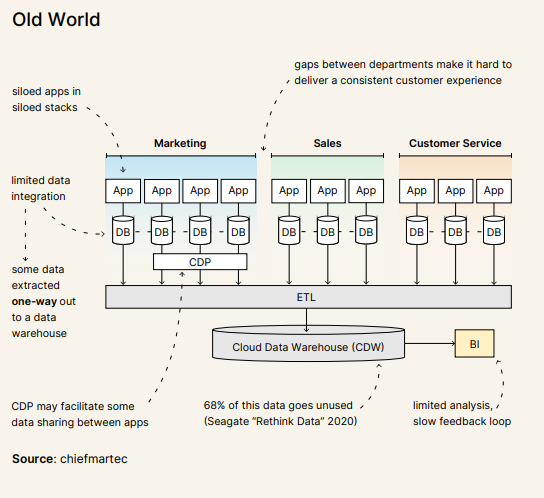
The encouraging news is that the era of tech stacks with each app maintaining a separate and private database, causing limited data flows, is now a thing of the past. In the grand scheme of modern marketing architectures, a Cloud Data Warehouse (CDW) — such as Snowflake, Databricks, AWS Redshift, or Google BigQuery — should be positioned at the core of the entire stack or ecosystem.
This strategic placement empowers business teams to seamlessly blend and utilize data from various systems and channels. The result enables organizations to drive an omnichannel customer experience, breaking down silos and fostering a more integrated, data-driven marketing strategy.
This shift towards centralized data management not only enhances the efficiency of analytics but also opens up new possibilities for agility and innovation in the dynamic landscape of marketing technology.

These highlighted insights provide just a glimpse into the wealth of information contained in the MarTech for 2024 report. A true treasure spanning 93 pages, this report is a must-read for all marketing and loyalty professionals. It offers a comprehensive overview of the evolving landscape, shedding light on key trends, challenges, and strategic recommendations.
A heartfelt thank you to Scott and Frans for their dedication in crafting this remarkable piece of work.


